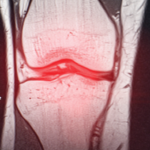With many new agents designed to treat PsA, rheumatologists and patients have options. Schwartzman et al. examined the real-world use of different treatments and ranked patient medication preferences.


With many new agents designed to treat PsA, rheumatologists and patients have options. Schwartzman et al. examined the real-world use of different treatments and ranked patient medication preferences.

Walter P. Maksymowych, MB ChB, FACP, FRCP(C) |
The axial phenotype of psoriatic arthritis (axPsA) is an excellent example of a major controversy in rheumatology that has become the focus of attention because of the emergence of new therapies with different mechanisms of action for alleviating joint inflammation. It was first described in 1961 but, until recently, it has largely remained under the…

Philip Helliwell, DM, PhD, FRCP |
When Moll and Wright first described the spondyloarthritides in the early 1970s, the archetype of the group was ankylosing spondylitis (AS).1 The shared clinical features of the spondyloarthritides were sacroiliitis; asymmetric large joint peripheral arthritis; psoriasis or psoriaform skin lesions, including keratoderma blennorrhagica; uveitis; and bowel inflammation. Moll and Wright described five clinical subgroups of…

Maria de la Luz Garcia-Hernandez, PhD, & Christopher Ritchlin, MD, MPH |
The etiology of psoriatic arthritis (PsA) is poorly understood but current evidence supports an interaction between genetic and environmental factors that coalesce to promote local tissue inflammation.1-3 The pivotal cytokines that underlie the local inflammatory response in a wide range of tissues are interleukin (IL) 23, IL-17 and tumor necrosis factor (TNF).4 The central contribution…

Rebecca H. Haberman, MD, & Jose U. Scher, MD |
As the cloud moved away from the tent, Miriam’s skin suddenly became diseased, as white as snow. When Aaron turned toward her, he saw that she was diseased. —Numbers 12:10 For 29 years he [Fray Pedro de Urraca] was afflicted by … pain, suffering it at once in all the joints of his body, with…

Two recent trials demonstrated the safety and efficacy of risankizumab-rzaa for the treatment of adults with active psoriatic arthritis.

At the 17th Annual Advances in the Diagnosis and Treatment of the Rheumatic Diseases meeting, Ana-Maria Orbai, MD, MHS, discussed lessons learned from the cases of several patients with psoriatic arthritis.

In March A&R, Remaeus et al. reported on the results of their study, which evaluated pregnancy outcomes in relation to anti-rheumatic treatment before and during pregnancy, as a proxy of disease severity in pregnant women with psoriatic arthritis (PsA), compared with those without PsA.

The differences between axial spondyloarthropathy (axSpA) and axial involvement in psoriatic arthritis (axPsA) have clinical and therapeutic implications. Three experts discussed the distinctions during ACR Convergence 2021.

The use of guselkumab improved joint and skin symptoms in biologic naive patients with PsA, according to research presented during ACR Convergence 2021.